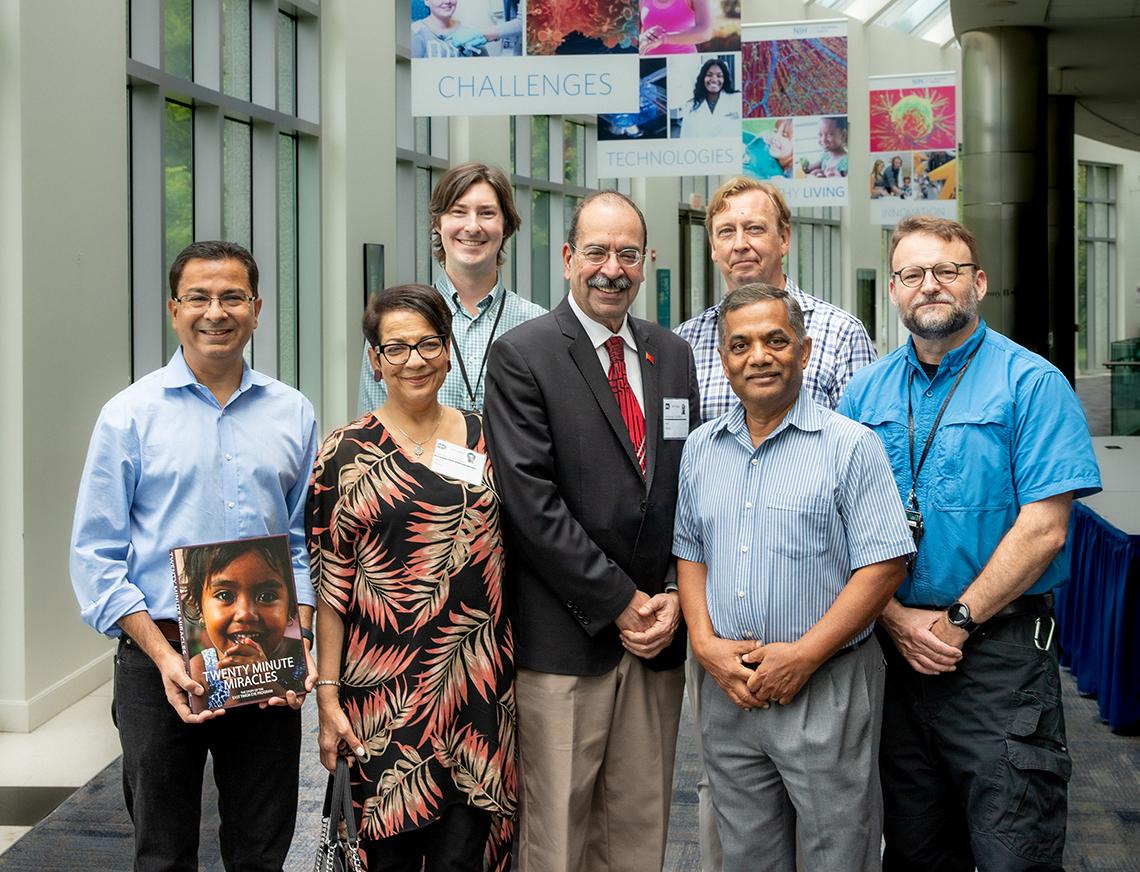Filling the Eye Care Gap Down Under

Photo: Dustin Hays
When people think of Australia, they think of kangaroos and sandy beaches, said Dr. Nitin Verma, an ophthalmic surgeon and chair of the global eye health committee of the Royal Australian and New Zealand College of Ophthalmologists (RANZCO). “But today I’ll talk about ophthalmology—not just about ophthalmology in Australia but also the South Pacific, a region which I think the whole world has forgotten.”
This summer, Verma visited NIH and shared his lifetime perspective on the delivery of vision care to underserved populations in the Australia/South Pacific region—roughly 50-million people scattered across vast stretches of land and ocean. His talk was part of the Global Health Vision Lecture Series, sponsored by the National Eye Institute (NEI) and NIH’s Global Health Interest Group (GHIG).
As RANZCO president (2020-2022), Verma was central to Vision 2030 and Beyond—RANZCO’s plan to improve vision health across Australia with special emphasis on vulnerable populations such as indigenous people who have a three-fold greater risk of blindness from eye disease.
Underpinning the plan, a living document, are six “pillars”: workforce training, service delivery, closing the gap for indigenous people, preventive health, global health and sustainability. In coordination with their roadmap for vision, RANZCO published a reconciliation action plan to ensure that solutions are conceived and carried out in a culturally appropriate manner.
“You can’t just walk in and say, ‘I have a solution!’ We don’t have a solution. We have to do it together,” he said.
Community-building has been at the core of Verma’s long, distinguished career. He’s worked to improve accessibility and quality of care in Papua New Guinea and sparsely populated regions of Australia. He arrived in East Timor just after their independence from Indonesia in 1999.
“The whole country was destroyed in the wake of Indonesia’s departure,” Verma said.
The health care infrastructure had collapsed, along with everything else. Crime was so rampant that everyone carried a gun, even when jogging, he noted.
With assistance from the World Health Organization, in 2000 Verma set up makeshift eye clinics with teams of care providers who donated their time and expertise.
Some patients came to the clinics by canoe, he said. But no matter how they arrived, they nearly always entered the clinic with late-stage eye disease, including advanced cancer.
“We could do what we could do, and we did what we could, but it was always too late,” Verma said.
With help from partners in Australia, India, Switzerland, Cuba, Nepal and elsewhere, he helped establish the East Timor Eye Program to develop a long-term solution. Baked into the plan was the goal of eventually handing over the program to the Timorese.
In partnership with Sydney University, the program trained local students in routine eye care, surgery, nursing, optometry, low vision, research and more.
Beyond medical training, the program provided advocacy training to teach skills in administrative tasks such as supplies procurement, grant writing, and how to collaborate with local and foreign politicians and bureaucrats.
“I’ve heard a lot of incredible stories, but these leave me speechless,” said NEI Director of International Programs Dr. Gyan “John” Prakash in closing remarks.
To learn more about the East Timor Eye Program, visit https://shorturl.at/iWX69.
The Global Health Vision Lecture Series is sponsored by NEI, Fogarty International Center and GHIG. The series was created by NEI’s Office of International Programs in 2012 to foster the global collaboration and exchange of information among international vision researchers and eye health clinical scientists.
